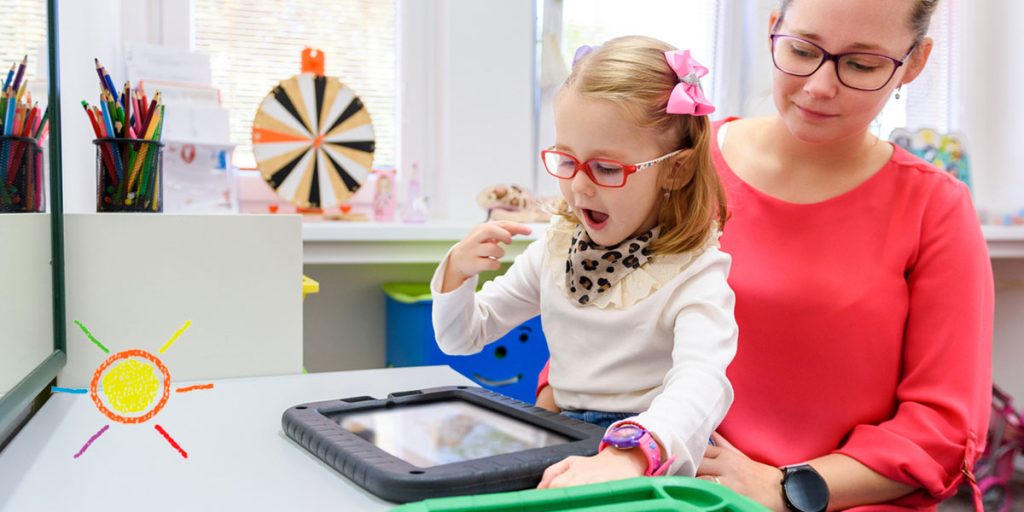Around 40% of children with autism spectrum disorder also have an anxiety disorder, which can further impact their daily functioning and overall well-being. For instance, anxiety can interfere with your child’s ability to participate in social interactions, attend school, engage in daily activities and manage transitions. The signs of anxiety may appear similar to those of autism, causing symptoms like difficulty sleeping, emotional outbursts, and avoiding social situations.
Many parents of children with autism seek animal-assisted and pet therapies as an effective form of anxiety treatment. Children with autism tend to love animals for the emotional bond and nonjudgmental companionship they provide. Here’s everything you need to know about anxiety in children with autism and the benefits of pets.
Signs of Anxiety in Children With Autism
When children with autism get anxious or worried, they may display symptoms similar to those of autism — resistance to changes in routine, stimming, and special interests. And since children with autism often have difficulty recognizing their emotions, they can’t always tell you when they feel anxious.
However, you may notice the following symptoms:
- Difficulty sleeping
- Meltdowns or emotional outbursts
- Avoiding or withdrawing from social situations
- Self-harm behaviors like scratching, head-banging or hand-biting
These anxiety symptoms can be alarming for many parents, which is why it’s crucial to learn your child’s triggers. Changes in routine or environment, unfamiliar social situations and sensory activities can all lead to anxiety symptoms in your child. Knowing these triggers can help you determine the best way to help your child manage their anxiety.
When treating anxiety in children with autism, a comprehensive approach often works best, including behavioral therapy and social skills training tailored to their unique needs and challenges. Many parents also adopt pets for children with autism to help relieve anxiety symptoms.
How Do Pets Reduce Stress and Anxiety?
Pets, such as dogs, cats or even smaller animals like guinea pigs or rabbits, can provide numerous benefits and have been found to reduce stress and anxiety in children with autism. Studies also show pets can also improve family functioning and reduce stress for parents.
It’s important to note that introducing a pet into a household should be done thoughtfully and considering the child’s and family’s specific needs and abilities. Proper supervision and guidance from parents or caregivers is essential to ensure the child’s and the pet’s safety and well-being.
Here’s an exploration of how pets can reduce anxiety and positively impact the well-being of children with autism:
Emotional Bond
Pets can form deep emotional bonds with children. For children with autism who may struggle with social interactions, the unconditional love and companionship a pet provides can be incredibly comforting and reassuring.
Decreased Stress Levels
Interacting with pets has been shown to lower stress levels and promote relaxation. The act of petting an animal can trigger the release of oxytocin, a hormone associated with bonding and stress reduction, leading to a calming effect.
Nonjudgmental Companionship
Children with autism often feel judged or misunderstood by others. Pets offer nonjudgmental companionship, accepting children for who they are without any expectations or demands. This unconditional acceptance can boost a child’s self-esteem and sense of belonging.
Social Interaction Practice
Interacting with a pet can provide a safe environment for practicing social skills. Children can engage in activities such as playing, grooming or training their pets, which can enhance their communication and social interaction abilities.
Routine and Responsibility
Caring for a pet requires a routine and a sense of responsibility. This can help children with autism establish structure and develop essential life skills, such as feeding, grooming and exercising the pet. Following a routine can also provide a sense of predictability and stability, which can reduce anxiety for children with autism.
Physical Activity
Pets often require physical exercise, such as walking a dog or playing with a cat. Engaging in physical activities with pets can encourage children to be active, promoting physical health and releasing endorphins, which can improve mood and reduce anxiety.
Emotional Regulation
Children with autism may experience challenges in emotional regulation. Pets can serve as emotional support, providing a calming presence during moments of distress or anxiety. The act of petting or cuddling a pet can help children regulate their emotions and promote a sense of emotional well-being.
Improved Communication
Pets can serve as a bridge for communication between children with autism and others. For example, a child may feel more comfortable initiating a conversation about their pet, leading to increased social interactions with peers or adults. This can enhance communication skills and build social connections.
Enhanced Empathy and Understanding
Caring for a pet can foster empathy and understanding in children with autism. By recognizing and meeting the needs of their pet, children learn to consider the feelings and perspectives of others, which can translate to improved empathy in their interactions with people.
Sensory Stimulation
Many children with autism have sensory sensitivities. Pets offer a variety of sensory experiences, such as the soft fur of a dog or the gentle purring of a cat. These sensory stimulations can help children regulate their sensory systems and provide a soothing effect. Just remember to adopt a pet that matches your child’s specific needs. For instance, a big, loud, highly active dog might cause sensory overload for a particular child, while a quiet cat may be better.
Stress Relief and Coping Mechanism
Children with autism may face heightened levels of stress and anxiety. Pets can serve as a source of comfort and a coping mechanism, providing a safe space for children to redirect their attention and manage their emotions during stressful situations.
Increased Social Opportunities
Owning a pet can create opportunities for social interactions and connections. For instance, walking a dog in the neighborhood may lead to conversations with other pet owners or encounters with peers. This can expand a child’s social network and provide valuable social experiences.
Request an Appointment at MySpot Care
A pet can be a significant anxiety reducer for kids with autism. Their presence provides emotional support, opportunities for social interactions, sensory stimulation and a sense of routine and responsibility. By incorporating pets into the lives of children with autism, families can harness the therapeutic benefits and create a nurturing environment that promotes their child’s overall well-being.
If your child is experiencing anxiety and other difficulties that impact their day-to-day life, connect with MySpot Care. Our pediatric specialists provide compassionate and comprehensive services to help your child thrive. Our therapeutic programs are personalized according to your child’s lifestyle, health requirements and personal preferences.
To get started, contact us to learn more or request an appointment today.


